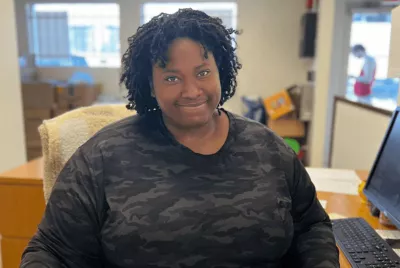Young People of Color Are More Likely to Face Homelessness
Young people who are Black, Hispanic, and Indigenous experience homelessness at higher rates, largely due to systemic and structural racism.

How Does Racial Discrimination Impact Youth of Color?
Racism negatively impacts a young person’s sense of self. As teenagers, young people establish critical aspects of their identity within the various environments, influences, and exposures that surround them. In the book “Reaching Teens,” the authors write that these forces can either build strengths or “create tension and deliver toxic levels of stress.”
Racism also attempts to lock young people of color into low expectations for their lives, the authors add. Two-thirds of Black and Latine youth attend segregated schools that often have lower budgets that impact class size, teacher qualifications, and the availability of instructional resources.
In these schools, youth of color are subject to biased perceptions of misbehavior by educators and stories that perpetuate a ‘failure narrative.’
A large majority of youth who come to Covenant House in the U.S. and Canada are people of color.
Black or African American youth had an 83% higher risk of reporting homelessness in the U.S. than white youth.
Hispanic youth are 33% more likely to experience homelessness in the U.S. than white youth.
Understand Racial Discrimination by Region
The regions we serve are impacted by the effects of systematic racism differently, and we adapt our practices to best serve youth where they live.
Young People of Color Face Adverse Childhood Experiences
Racism figures among what psychologists and social workers call “adverse childhood experiences,” or ACEs. Initially considered to be related primarily to trauma that youth experience in the home, such as abuse and neglect, ACEs are now understood to include stressors that occur outside the home as well, such as community violence, living in unsafe neighborhoods, and racial discrimination.
Adverse childhood experiences, including racism, have been found to lead to physical health conditions such as heart disease, autoimmune disorders, cancer, emphysema, diabetes, and to mental health conditions such as substance use, depression, anxiety, and post-traumatic stress disorder. Racism is literally making our young people ill.
But these negative results are not etched in stone. Research also tells us that the presence of caring adults and positive relationships are protective factors that can mitigate against the harsh effects of ACEs, including racism. With the right support system, young people of color can overcome these negative experiences and reach their full potential.
Watch the Video: How Racism Influences Homelessness
Covenant House staff share their expertise and lived experience to bring light to the realities of homelessness for people of Black, Indigenous, Latinx, or Asian descent.


“Covenant House was there for me. They didn't know me, but they treated me like family. I have no words to express how Covenant House changed my life… they just really, genuinely wanted to help me succeed. And I'm succeeding.”
Molly, Covenant House AlumnaNews and Insights
All news & insightsWho Is at Risk of Youth Homelessness?
Many factors increase a young person’s chances of experiencing homelessness, but some of our most vulnerable populations face the greatest risk.
LGBTQ+ Youth
LGBTQ+ youth experience a much higher risk of homelessness than their peers. Once on the street, they face additional hardships because of stigma and discrimination.
Pregnant and Parenting Youth
Youth who are parenting solo have a 200% higher risk of homelessness.
Help Young People Overcome the Harms of Racial Discrimination
Your support today can make the difference for a young person of color facing homelessness.


